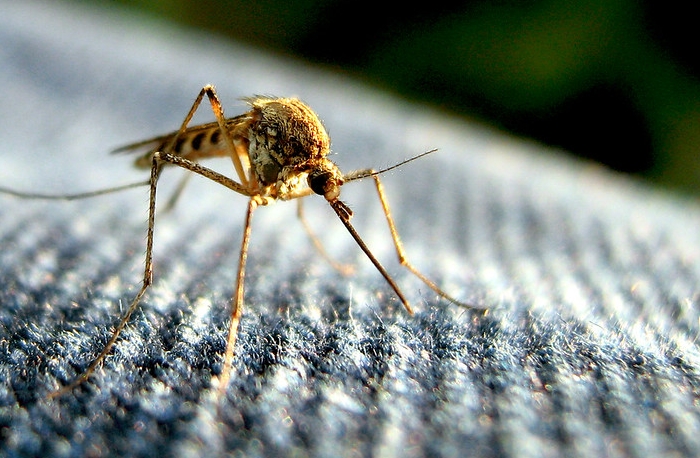By: Kyle Martin
Image courtesy of Tom via Flickr Creative Commons
Background
Dengue virus is an acute illness that is spread through the bite of an infected Aedes species mosquito. This is done so when a female mosquito feeds on an infected human host, therefore infecting the mosquito, and then subsequently bites an uninfected human. Once an individual has had Dengue, they develop lifelong immunity to that strain. There are four strains in total (1, 2, 3, and 4), therefore an individual can be infected with dengue up to four times throughout their lifetime [5]. The Aedes species mosquito is also responsible for carrying the Zika and Chikungunya viruses [1,5].
For individuals infected with Dengue, about 1 in 4 will develop symptoms. Mild symptoms, which are the most common, include fever, nausea, and joint pain. There is no specific treatment for this and symptoms normally last 2-7 days. About 1 in 20 symptomatic individuals will develop severe Dengue about 24 hours after their mild symptoms have subsided. This can be life-threatening, and symptoms include bleeding from the nose/gums, excessive vomiting, lethargy, and stomach pain. These individuals must seek medical attention immediately for symptom management, though no true treatment exists [5].
In 2018, research was done on an Italian male infected with Dengue. The study concluded that Dengue virus could be found in semen up to 37 days after initial infection. The viral load in this sample at 37 days was found to be high enough to possibly infect other individuals [4]. A similar study found that Dengue could be detected in vaginal secretions up to 18 days from symptom onset [3]. These findings indicate that Dengue could possibly be spread through sexual contact.
Case Report
While Dengue primarily spreads through Aedes mosquito bites, it can be spread to fetuses from an infected mother in rare cases and in even more rare instances, it can be spread by blood transfusions, organ transplants, and needle sticks [5]. Over the past several years, however, there have been two reported cases of sexual transmission, which until now was an unconfirmed route of transmission [1,2].
The first reported case occurred in 2013 in South Korea, a place that is not endemic to Dengue. A male (Patient A) was admitted to a hospital and diagnosed with Dengue through laboratory testing. After conducting interviews, it was determined that Patient A had no possible environmental exposure to Dengue and had no exposure to other known transmission routes. His girlfriend (Patient B) had just returned from an endemic region in Indonesia several days before and had sexual intercourse with him. Patient B was then tested and was confirmed to have Dengue. Further RNA sequencing and PCR confirmed that Patient A’s and Patient B’s strains were a complete match, indicating that one person had infected the other. Due to Patient B’s environmental exposure and subsequent diagnosis of Dengue, Patient A’s lack of environmental exposure and subsequent sexual intercourse with Patient B, it was concluded that the Dengue virus was transmitted to Patient A via sexual transmission. This was the first recorded case of this type [1].
The second reported case occurred in September of 2019 in Spain, which is not endemic to Dengue. Similarly, a male (Patient A) was diagnosed with Dengue and had no known environmental exposure. His partner (Patient B), also a male, had recently traveled to Cuba and had sexual intercourse with him upon return. Patient B was then diagnosed with Dengue and his strain was found to be identical to Patient A’s. Furthermore, Patient A’s strain was similar to ones that are found in Cuba, even though he had not traveled to Cuba in recent history. It was concluded that Patient A was infected with Dengue via sexual transmission, making this the second recorded case of this transmission route [2].
Relevance
With these two cases confirming the possible transmission of Dengue through sexual contact, the risk of infection to individuals living in non-endemic locations increases [1,4]. With only two confirmed cases, it is impossible to determine the transmission rates via sexual contact. Still, healthcare providers living in non-endemic areas should be aware of this route and not rule-out possible cases of Dengue solely based on a patient’s recent travel history. Furthermore, more research into sexual transmission of Dengue is strongly encouraged.
References
- Changhwan Lee & Hyungmin Lee (2019) Probable female to male sexual transmission of dengue virus infection, Infectious Diseases, 51:2, 150-152, DOI: 10.1080/23744235.2018.1521004
- European Center for Disease Prevention and Control. (2019). Communicable Disease Threats. Communicable Disease Threats. Retrieved from https://www.ecdc.europa.eu/sites/default/files/documents/Communicable-disease-threats-report-9-nov-2019.pdf
- Iannetta, M., Lalle, E., Musso, M., Carletti, F., Scorzolini, L., D’Abramo, A., … Nicastri, E. (2017, August 24). Persistent detection of dengue virus RNA in vaginal secretion of a woman returning from Sri Lanka to Italy, April 2017. Retrieved November 12, 2019, from https://www.ncbi.nlm.nih.gov/pmc/articles/PMC5753441/
- Lalle, E., Colavita, F., Iannetta, M., Teklè, S. G., Carletti, F., Scorzolini, L., … Nicastri, E. (2018, May 3). Prolonged detection of dengue virus RNA in the semen of a man returning from Thailand to Italy, January 2018. Retrieved November 12, 2019, from https://www.eurosurveillance.org/content/10.2807/1560-7917.ES.2018.23.18.18-00197.
- Transmission. (2019, September 26). Retrieved November 12, 2019, from https://www.cdc.gov/dengue/transmission/index.html.


